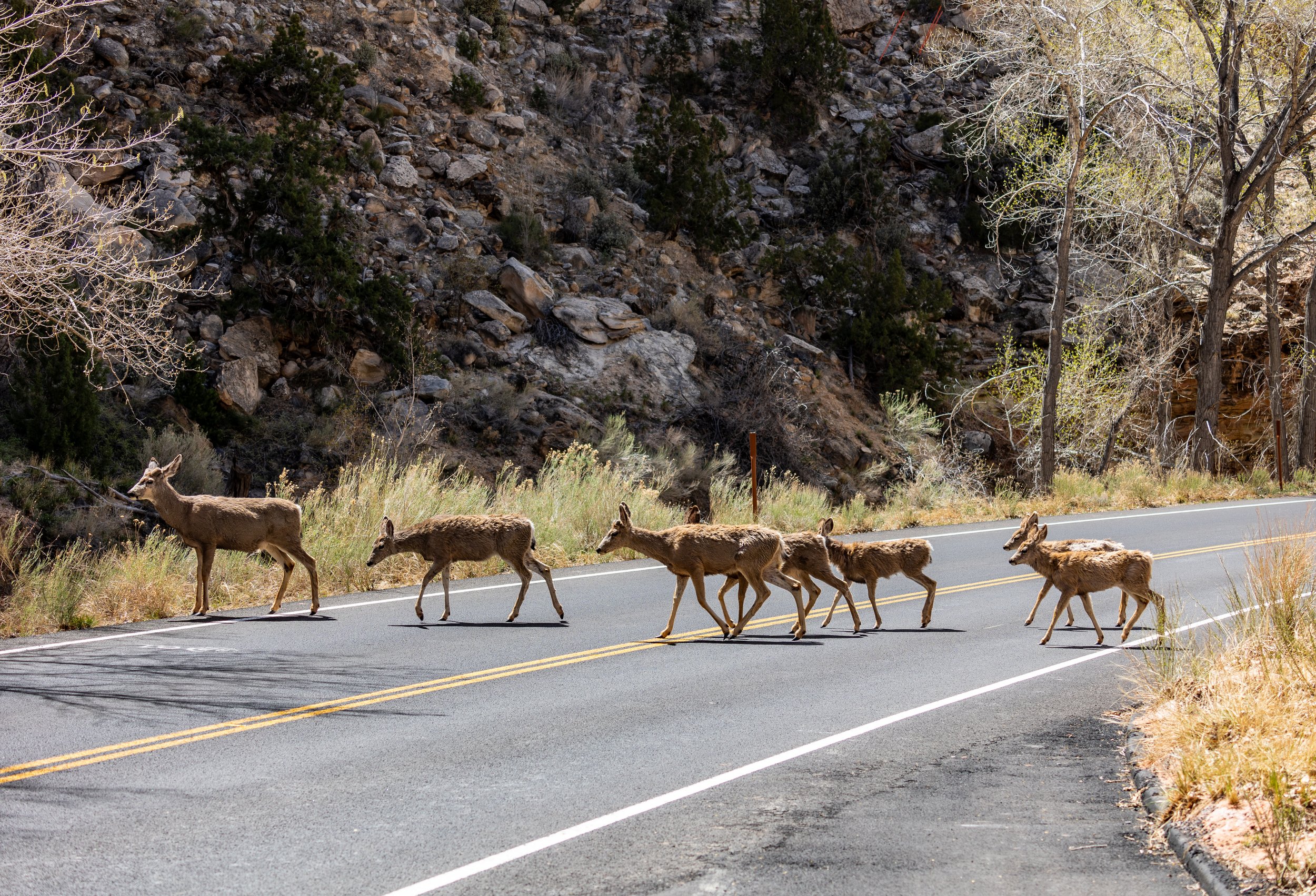Celebrating Wildlife Crossings in Utah
Photo by: Adobe Stock/Jeffrey
When Wildlands Network chose to move its headquarters to Utah, many questioned why we would set up shop here. The popular thinking among the conservation community was that Utah was a hopeless place where we would bang our heads against the wall. I hope this year's successful outcome continues to change minds about what is possible here in Utah and anywhere in the United States when you invest in partnerships focused on addressing the biodiversity crisis.
- Katie Davis, Wildlands Network Executive Director
This spring, Wildlands Network staff experienced a thrilling, rewarding, and tumultuous journey through several state legislative sessions, supporting legislation that will make monumental shifts in the way state agencies work to safeguard wildlife.
So far, this year, Wildlands Network has championed an organizational record of 10 bills across the nation that aim to reconnect, restore, and rewild the American landscape within North America. The bills we supported this year have helped catalyze the construction of wildlife crossing infrastructure and sought to create local protections for critical wildlife movement corridors amongst our increasingly developed landscapes.
As we near the end of state legislative sessions across the nation, we have seen unprecedented commitments to investing in wildlife crossings and an extremely encouraging amount of bipartisan support for crossing and wildlife corridor bills.
A large herd of elk that relies on safe passage across interstates and highways to migrate. Credit: Adobe Stock /Tom
From northern Alpine slopes to southern desert landscapes, Utah is home to over 600 species of fish, mammals, birds, reptiles, and amphibians. All of these species are impacted by Utah’s roads. Deer, elk, and pronghorn cross highways during seasonal migrations, and other species, including mountain lions, coyotes, and bobcats, cross roadways daily to find suitable habitat, food, and mates.
As a result, Utah has been a pioneer in the field of wildlife crossings since building the nation’s first wildlife overpass in 1975. The state has dozens of wildlife crossings and added seven new structures last year alone.
Despite these efforts, Utah’s elk made headlines in 2023 when a herd of 60 elk stopped traffic while streaming across I-80 between Salt Lake and Park City.
“This sight is unbelievable,” reported ABC4. “This was such a shock for neighbors and for drivers... A huge public safety issue,” added KUTV2. Wildlife are still actively crossing roads and in need of additional support.
Alongside heightened public awareness of these issues, Wildlands Network successfully advocated for Utah’s allocation of $20 million specifically for wildlife crossings. This commitment helped leverage funding from the Wildlife Crossings Pilot Program under the Bipartisan Infrastructure Law, where Utah also received a portion of the initial $110 million aimed at improving nationwide wildlife connectivity and reducing wildlife-vehicle collisions.
This year, Utah took a significant next step by approving SB 6, which included permanent funding for wildlife crossings. Utah became the first state in the country to dedicate non-lapsing funding for wildlife crossings. The $1 million appropriated is still just a start for what will ultimately be needed, but its significance can’t be overemphasized.
“Last year’s appropriation of $20 million represented the second-most money a state has directed towards these structures, and, this year, Utah became the first state to commit recurring funding to support wildlife crossings,” said Michael Dax, our Western Program Director. “The state continues to lead the way.”
Crossing projects are large, multi-year projects that require research, design, and construction phases. Having a permanent source of funding ensures that existing projects can advance through each phase, and that other high-priority projects will continue to progress through the pipeline.
To support the bill, Michael organized consistent, action-oriented meetings leading up to and throughout Utah’s legislative session with several key stakeholders of Utah’s wildlife community. He also helped organize a community outreach day where 15 state legislators were present to hear the policy coalition’s message.
Our Executive Director, Katie Davis, also supported these efforts by meeting with legislative leadership including Speaker Mike Schultz and Representative Casey Snider in support of SB 6.
Katie Davis with members of the Utah Wildlife Connectivity Working Group as they provide information about the importance of funding before voting to an elected representative from Utah and one of Governor Cox’s senior advisors. Photos by: Alex Tarbet (top) and Governor's Office Staff (bottom)
“Securing permanent funding for wildlife crossing infrastructure has long been a missing and critical piece of the state habitat connectivity policy puzzle. It’s one of Wildlands Network’s top policy goals of 2024,” says Erin Sito, Wildlands Network’s U.S. Policy Director. “We are excited to celebrate Utah’s success and hope that other states like Virginia, Oregon, and Colorado will soon follow suit.”
Cover photo by: Adobe Stock/Tom





